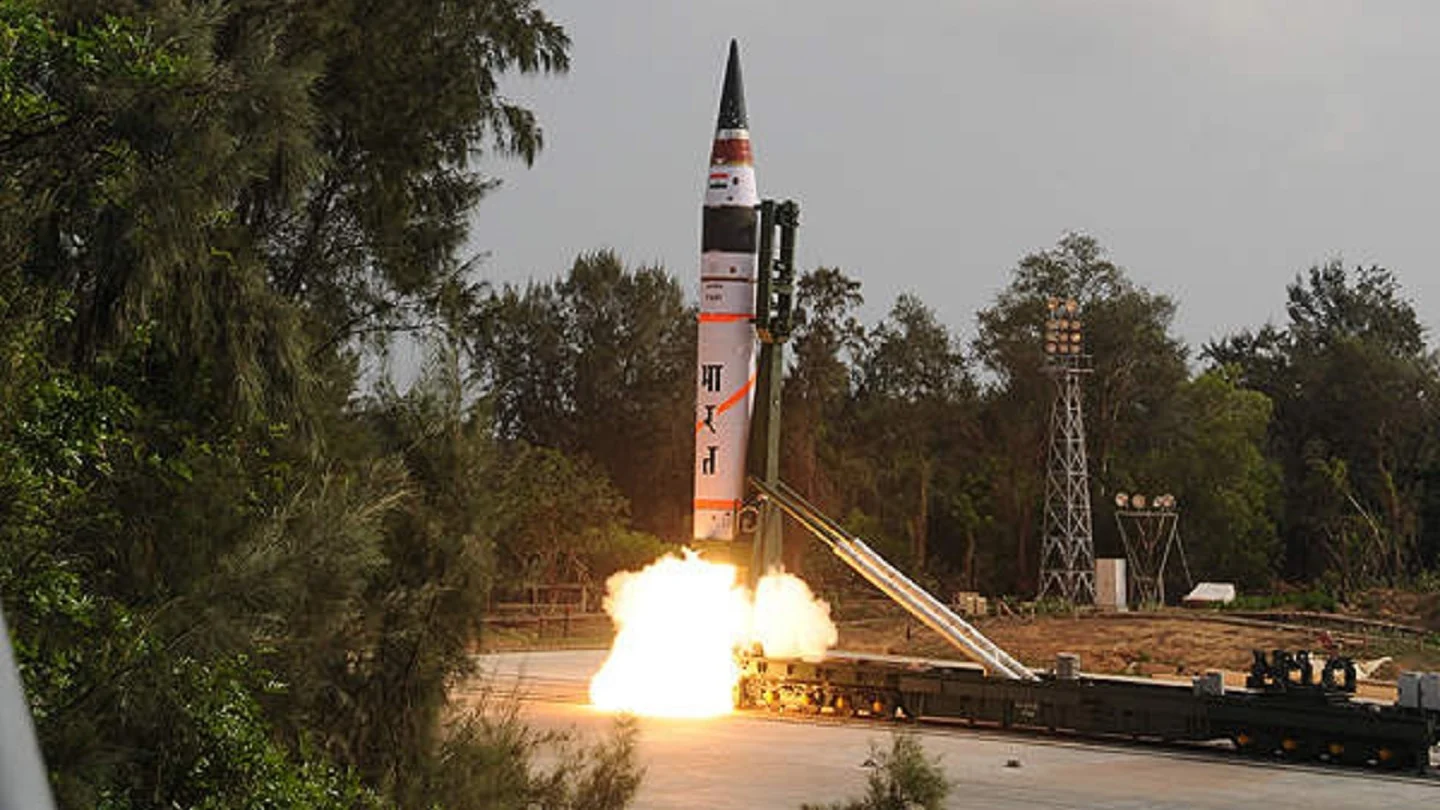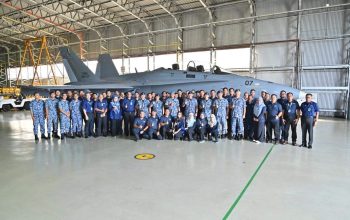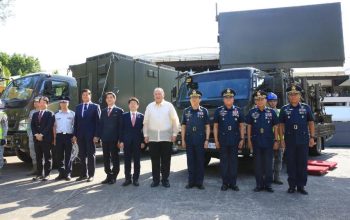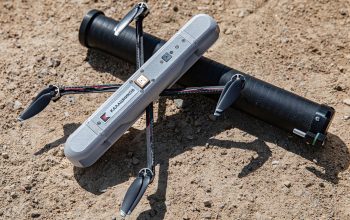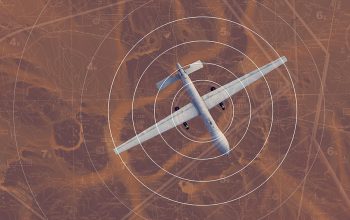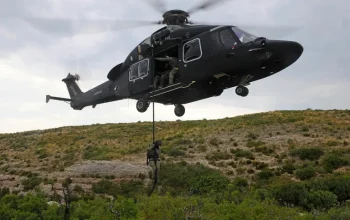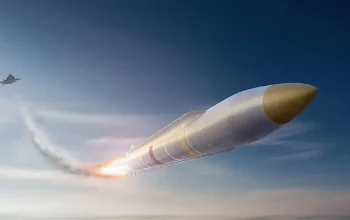The flight test by India’s Defence Research and Development Organisation (DRDO) of the country’s Agni-5 ship-launched ballistic missile (SLBM), fitted with multiple independently targetable re-entry vehicle (MIRV) technology, could ignite a regional nuclear arms race, analysts state. Announcing the first flight of a MIRV-equipped Agni-5 SLBM on 11 March, Indian authorities hailed the technological milestone, with India joining the US, UK, France, Russia, and China as countries able to launch MIRV-equipped ballistic missiles. When fitted with MIRVs, a ballistic missile’s potential destructive capacity is enhanced significantly, with each independent re-entry able to be equipped with a nuclear warhead.
The Agni-5 ballistic missile has a range in excess of 5,000km, and potentially beyond 7,000km according to some estimates. Chinese researchers allege that the missile has the range of 8,000 km.[20] It’s a three-stage, road-mobile, canisterised, solid-fueled ballistic missile. Alternatively, non-nuclear tipped MIRVs could act as decoys in an attempt to confuse or saturate enemy air defences, enabling MIRVs that have nuclear warheads to get through to target. Following the Agni-5 test, the next steps will see India likely deploying MIRV technology in its K-5 and K-6 SLBMs onboard the Arihant-class and the upcoming S5-class ballistic missile submarines (SSBNs) of the Indian Navy, which will enhance the country’s sea-based deterrence.
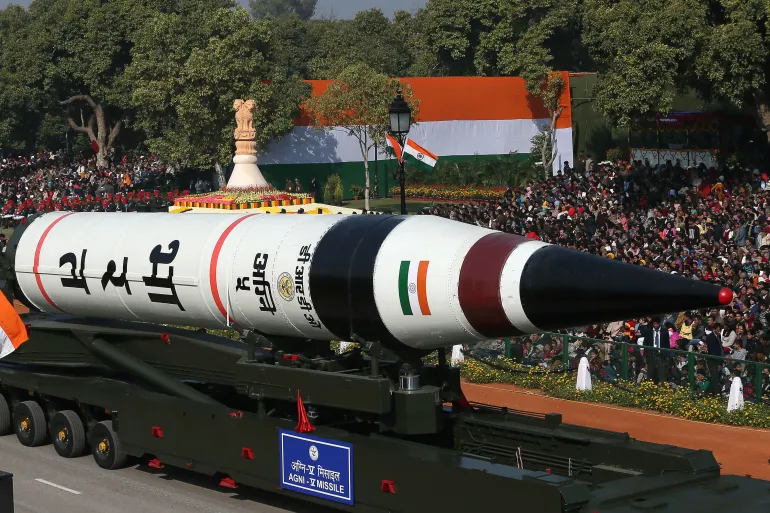
The Agni-V is a three-stage solid fuelled intercontinental ballistic missile with composite motor casing in the second and third stage. In many aspects, the Agni-V carries forward the Agni-III pedigree. With composites used extensively to reduce weight, and a third stage added on (the Agni-III was a two-stage missile), the Agni-5 can fly significantly more to inter-continental range. A ring laser gyroscope based inertial navigation system (RLG-INS) is primarily responsible for guiding the Agni-V to its target. However, Agni-V is equipped with another guidance system called micro inertial navigation system (MINGS) as a backup. These are capable of interacting with Indian and foreign satellite navigation systems like NavIC and GPS.
Agni-V has MIRV capability, with each missile being capable of carrying around 10-12 separate maneuverable nuclear warheads. Each warhead can be assigned to a different target, separated by hundreds of kilometres; alternatively, two or more warheads can be assigned to one target. MIRVs ensure a credible second strike capability even with few missiles. The MIRV payload would be significantly heavier since it would consist of several nuclear warheads, each of them weighting about 400 kilogrammes. A 5-warhead MIRV configuration, therefore, would weigh two to four tonnes. The MIRV payload of Agni-V is equipped with multiple nuclear warheads, each of which is designed to be delivered at a different speed and along a different trajectory to strike distinct targets hundreds of kilometers apart.


